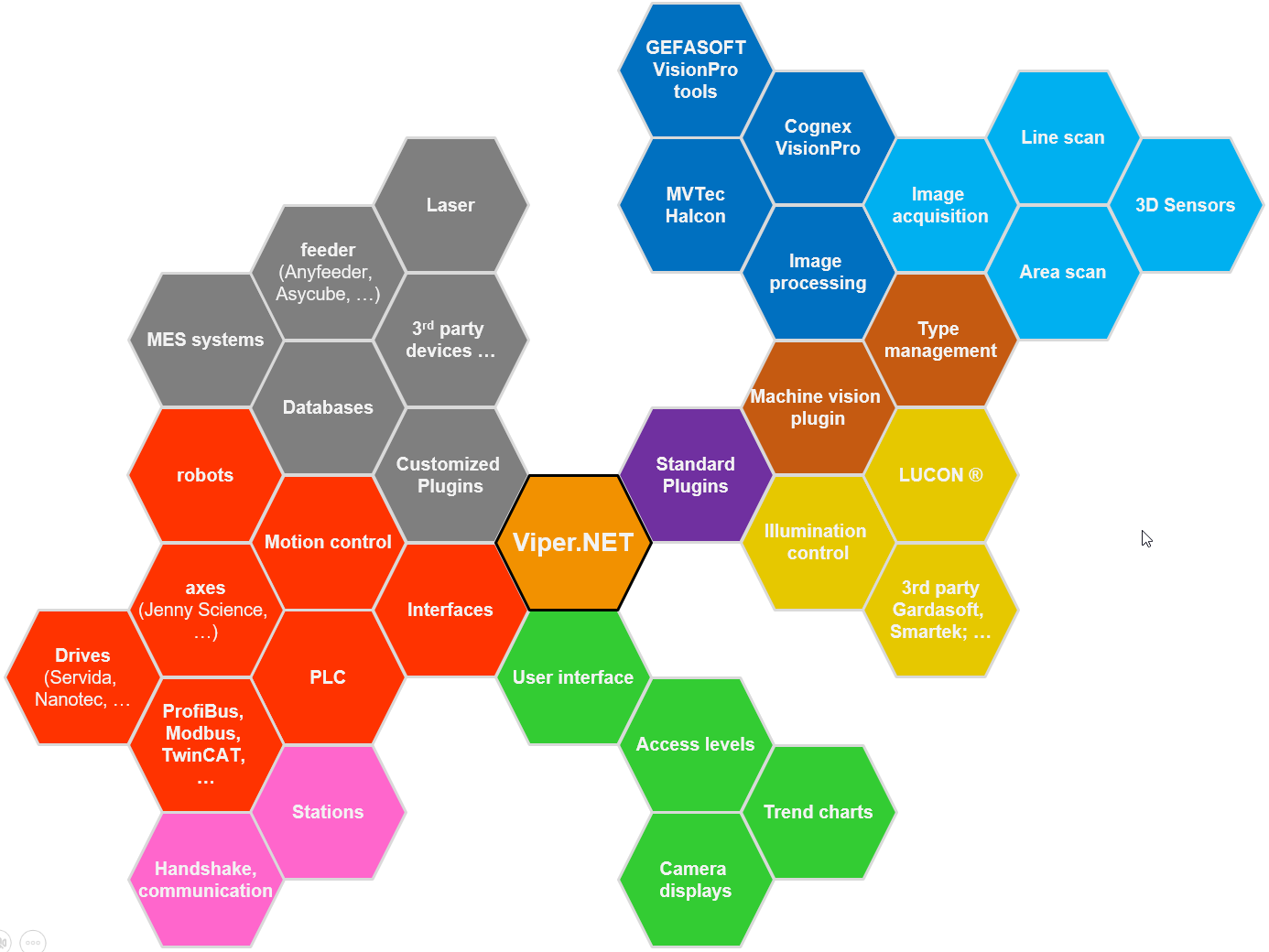About Viper.NET¶
For the integration of image processing into automated processes and machines, GEFASOFT GmbH provides Viper.NET, a product that relieves the developer of many routine tasks. With Viper.NET, all relevant interfaces from and to image processing are conveniently provided, from image acquisition to communication with the plant control system, type management for product-specific parameter sets, and management of archived image data. For the evaluation of the image data, Viper.NET relies on the leading libraries in industrial image processing with Cognex VisionPro and MVTec Halcon.
Especially for automated machines with several camera stations distributed over the plant or even several different cameras per inspection station, the application development with Viper.NET remains simple and clear, because the structure of the hardware setup is mapped in the outline of the application. The individual stations are processed individually and also asynchronously. Especially in larger installations this results in cost advantages, because the central computer minimizes the license costs, but also the installation and maintenance effort. In addition, the advantages of PC-based image processing remain, such as the flexible selection of cameras, optics and lighting, the adaptable user interface and data management or the powerful and fast evaluation algorithms.
Viper.NET provides all function modules required for an industrial image processing application. This also includes a graphical user interface whose layout can be designed individually. In addition to the camera images, graphical information for image evaluation, statistics or trend curves can be displayed. In addition, various interface protocols are also supported for communication with a PLC or a host computer, and Viper.NET can also be used to directly control drives, for example for feeding the camera on a servo axis.
The design of Viper.NET as a modular platform ensures that future technologies, such as new 3D sensors, can be easily and conveniently integrated. In addition, customer-specific requirements - for example a proprietary MES protocol - can be made available via plug-ins.
